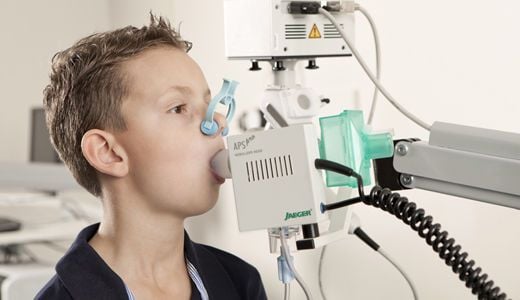
IOS was performed prior to spirometry to avoid influence of forced exhalation maneuvers on airway function ( 24). Baseline IOS and standard spirometry maneuvers were performed in accordance with ATS/ERS standards ( 23). Each subject was required to report a complete symptom history during the past 6–8 weeks, which includes daytime symptoms, nighttime symptoms, exercise symptoms and exacerbations, etc. Categorization of atopic was based on a single positive wheel (3 millimeters greater than negative control).
IOS LABMANAGER CAREFUSION SKIN
Participants received a nursing assessment to identify their health status, and skin prick testing of eight common allergens to assess atopic status. Written informed consent and assent were obtained from all participants and their parents or guardians.Īll study procedures were performed on the Breathmobile™ vans ( 22). The study was approved by the Institutional Review Boards of the University of California, Irvine and the Children’s Hospital of Orange County. Healthy children without history of asthma, allergies, or other lung diseases were also enrolled in the study as control subjects. Patients were excluded from the study if they were diagnosed with any other pulmonary or cardiac disease, had any history of smoking within 12 months of their enrollment, or if they were not able to perform a standard spirometry maneuver. Children were included in the study if they were 6–17 years of age and had a clinical diagnosis of asthma by a physician. The Breathmobile™ is a mobile asthma clinic that travels to schools, community clinics, and child development centers in low-income neighborhoods throughout Orange County, California and provides comprehensive asthma care to children who have asthma, or are at risk for asthma.

Therefore, the aim of the study was to investigate the utility of IOS in a pediatric population to detect uncontrolled asthma, and determine the cut-points that discriminate controlled versus uncontrolled asthma.Ĭhildren aged 6 to 17 years who were being actively treated for asthma on the Children’s Hospital of Orange County Breathmobile™ were enrolled in the study.

IOS has been shown to be useful in the diagnosis of asthma ( 20, 21) and small airway impairment in children ( 7) however, studies on the utility of IOS to assess asthma control are limited, and there are no published cut-points for IOS measurements to determine asthma control in children. IOS requires minimal patient cooperation, is effort-independent, and separately quantifies the degree of obstruction in central and peripheral airways ( 19). More recently, a much simpler technique, impulse oscillometry (IOS) has been increasingly used as a noninvasive method to assess airway resistance and reactance in children ( 17, 18). However they generally require forced exhalation maneuvers which can be difficult for young children to perform. There are different techniques to detect small airway obstruction, such as heliox flow volume loops ( 16). effort-dependent), which is difficult for young children and also hampers reproducibility. Finally, traditional spirometry requires the subject to perform forced expiratory maneuvers (i.e. For example, the most frequently used measurement (the forced expiratory volume in one second, FEV 1) mainly reflects the large airways ( 11, 12), and the mid-forced expiratory flow (FEF 25–75), believed to be a marker of small airways ( 13, 14), suffers from poor reproducibility ( 15).

Conventional spirometry is regarded as the gold standard assessment of airflow obstruction however, it has a limited capacity to distinguish distal and proximal airways. Increasing evidence indicates that peripheral airway function is associated with asthma control ( 6– 10). Therefore, the development of new, reliable, and non-invasive methods to assess of asthma control in children remains a priority and is essential for the effective treatment of asthma. However, assessing asthma control in children is particularly challenging for many reasons including a discrepancy in perceived symptoms between the child and parents ( 2, 3), and the poor correlation between symptoms and traditional objective tests such as spirometry ( 4, 5). Current guidelines emphasize that treatment decisions should be based on achieving and maintaining asthma control ( 1). Early diagnosis and control of asthma in children is very important because appropriate treatments may impact the course of the disease. Asthma is a lung disease characterized by airway obstruction and is one of the most common chronic disorders in children.


 0 kommentar(er)
0 kommentar(er)
